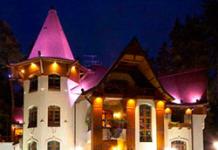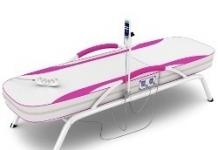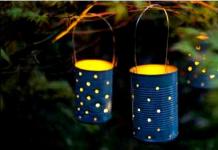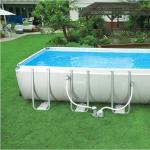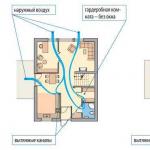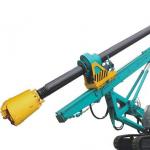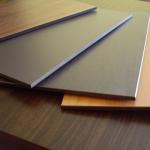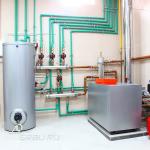Do you want to transform your home with original lighting? Our company will make your dream come true by installing the LED strip (the price for the work is minimal in Moscow)!
Prices for installing LED strip
| LED lighting installation service | Unit change | Cost of work |
|---|---|---|
| Single-color tape installation (decorative lighting) | p.m. | from 200 rub. |
| Main lighting with LED strip | p.m. | from 250 rub. |
| Installing RGB, RGB+W (multi-color) tape | p.m. | from 300 rub. |
| Facade lighting (building outline, decorative lighting) | p.m. | from 300 rub. |
| Lighting for Smart Home equipment | p.m. | from 300 rub. |
| Installation of light and music | p.m. | from 350 rub. |
| running fire | p.m. | from 350 rub. |
| Furniture lighting, kitchen work area | p.m. | from 350 rub. |
| LED strip display lighting | p.m. | from 400 rub. |
| Installation of a light strip for uniform illumination, lightbox | p.m. | from 150 rub. |
| Staircase lighting without aluminum profile | PC. |
from 400 rub. single color step from 500 rub. multicolor step |
| Staircase lighting with aluminum profile | PC. |
from 500 rub. single color step from 600 rub. multicolor step |
| Staircase lighting with aluminum profile, intelligent lighting system | PC. |
from 900 rub. single color step from 1000 rub. multicolor step |
| Installation of Neon (Ledneon Flex) | p.m. | from 300 rub. |
| Dismantling | p.m. | from 30 rub. |
| Departure of specialists | from 1,000 rub. | |
| Minimum installation amount | from 5,000 rub. | |
| Supervised installation. You have electricians, but you don’t want to take risks, then this service is just for you! The person exercises control and talks about the nuances. | from 5,000 rub. | |
| Development of turnkey LED lighting projects, including illumination calculation using the DiaLux system, according to all illumination standards. Installation of LED strip. With us, you will no longer need light bulbs, spotlights and chandeliers. | Negotiable | |
| Ceiling height above 3.5 meters | Individually | |
| Non-standard solutions | Individually | |
| Warranty for materials and installation work | 3 years | |
| *means for lifting the installer are provided by the customer (stepladder, car lift, etc.) | Individual installation conditions are considered separately |
Mounting LED backlighting may involve a number of processes:
- Development of an individual project;
- Preparing the surface on which LED strips will be installed;
- Drawing up an estimate (at the client’s request, we will calculate the cost of installing the LED strip per meter);
- Purchasing elements to create lighting and delivering them to the site (the final price is calculated depending on the type of luminous strip: plain or RGB);
- Installation of LED lighting and testing.
Call today and tomorrow we will begin decorating your home and giving it an elegant style!
Most often, the LED strip is installed on the ceiling, ceiling plinth or other places that can hide the mounting points of the LED strip. There is no consensus regarding which rooms LED lighting can be installed in: in the kitchen, in the hallway, on the street...
However, there are a number of restrictions of a different kind, which are more related to the properties of LED lamps, and not to the physical possibility of their installation.
Photo 1 - LED strip
Before installation and connection, it is necessary to make several approximate calculations and decide on some things, namely:
- whether there will be other, say, standard lighting in this room or not;
- installation of an LED strip (with your own hands or not - in this case it is absolutely not important) requires the installation of additional fastening elements, etc.;
- Is everything necessary for installation available if the installation will be done by hand?
The choice of lighting and its installation diagram
The rules for installing this kind of lighting, for example, on a profile installed additionally, are quite simple, but before abandoning a regular lamp or chandelier, you should answer the following question for yourself: “what if the LEDs burn out or their power supply burns out?” Here we will assume that the LED backlight resources will last for a long time, regardless of what the installation scheme is.
Photo 2 - Tools and consumables for installing LED strip
In terms of availability of the necessary tools and consumables, everything depends not only on the quality of the LED lamps themselves, but also on what installation scheme will be used in a particular case: you can assemble it “from scratch,” that is, at the moment when the installation of LEDs begins , collect everything suitable; Or you can buy everything complete with sets of LED lamps, which in some cases is probably more reasonable.
In addition, you should calculate the amount of tape that will be needed to illuminate one room. Practice shows that 15 meters of LED strip correspond, with a fairly large degree of approximation, in terms of luminous flux power to one ordinary incandescent lamp with a power of 200 W.
Photo 3 - Separate RGB LED on strip
LED strip installation
Calculation of lighting and choice of lighting equipment
Installation of LED lighting for the ceiling of a room or a frequently used area in the kitchen begins with calculations of the power consumption of the strip.
For example, from the packaging, in the store or on the manufacturer’s website, you can find out how many watts 1 m of tape consumes, for example, 7 watts. If 15 m were purchased, then the total power consumption will be 7 X 15 = 105 Watts (which is already less than a 200-watt light bulb!). When using SMD LEDs, both white and RGB, there are practically no deviations from the rated power consumption; however, it may be necessary to take into account the additional power consumed by amplifiers.
Figure 1 — Connection diagram of an RGB strip with a control controller and an RGB amplifier
The fact is that with all the advantages of powerful LEDs, there is a visible attenuation of the glow of the tape with distance from the source of electricity; this problem is “cured” solely through the installation (and, of course, purchase) of amplifiers.
A normal working kit may also include an RGB controller (if it is an RGB strip) and a transformer. The controllers can operate with voltages from 12 to 24 V, and the input voltage of the step-down transformer is 220-230 V. The main indicator of the controller is its rated power - as a rule, it is somewhere around 180 Watts, while the power consumption of the transformer is somewhere around - then 150 W. The ideal scheme for calculating the required power looks something like this:
Belt power< Мощность трансформатора < Мощность контроллера (если он нужен)
The larger the gap between neighboring values (within reasonable limits), the more reliable the operation of a particular section.
Installation of LED lighting
Installation of LED backlighting begins with cutting the tape; in this case, the tape is cut almost arbitrarily into 2, 3 or even 4 parts - it all depends on where it will be installed. The tape cuts are made in special areas. At all places where the tape is cut, it is necessary to clean the channel contacts for subsequent soldering with connecting wires.
The methods for connecting the prepared parts of the tape may be different, but in most cases, using the connectors from the kit that comes with the tape is not entirely convenient - they should be replaced with more convenient ones, but their resistance (material) should be similar to the previous one.
Photo 4 - The LED strip is connected, all that remains is to glue it in the right place
Further, the installation of LEDs, which are already assembled into a single electrical circuit, may require outside help, since it must be completely raised to the required height, if it is above the ground, which will be problematic to do alone.
At this stage, you should be extremely careful with the tape, which is not adapted to strong mechanical stress and tensile loads.
Fastening the tape will be less problematic if there is a clean surface along the entire length of its fastening on panels or walls.
It is also important to periodically check the performance of the tape and, if any problems are noticed, correct them before the tape is installed in its permanent place.
The final stage of installing the tape is mounting and masking the wires and transformer - in particular, the transformer indicator lights can produce unwanted glare. For this case, there is a special cover that covers the display panel, but does not prevent heat removal from the device.
When installing, you should take into account any little things, for example, you should not install the tape close to the ceiling - the reflected light will be more evenly distributed throughout the entire space of the room. By the way, if you place the tape evenly around the entire perimeter of the room, then under artificial lighting there will be practically no shadows from people and objects - the light will fall evenly as if from all sides.
Separately, it is worth mentioning the color range of light from strip LEDs: white LEDs, even if their use is combined with a dimmer, do not produce completely “white” light, which may not be entirely comfortable. In this regard, it is worth remembering what sunlight is (all the colors of the rainbow in one beam) and, as an option, consider purchasing RBG lamps, where the saturation can be adjusted.
Photo 5 - LED strip color scheme
LED strip, installation (a video review of a simple assembly option can be viewed right here) strips, connecting a power supply, selecting a power supply, etc. can be the main queries for searching for materials that tell about the individual details of choosing and installing LED lighting in any place and premises.
VIDEO of a simple assembly option
Photo 6 - LED lighting in the interior
Installation of LED strip: cost of installation and the strip itself
Of course, the price for different brands - LUNA, DELUX, FOTON, FERON, MAXUS, ARLIGHT - varies, among other things, depending on, for example, whether the tape is moisture resistant and what size of diodes it has; But how much does professional installation of one linear meter cost, that is, without taking into account the cost of the LED lamps themselves, in Kiev and Moscow you can find out quite quickly:
- installation of 1 m in Kyiv - from 15 hryvnia
- installation of 1 m in Moscow - from 200 rubles
Most likely, such indoor lighting systems belong to quick installation systems, where the amount of work is relatively small, even if they are mounted on the ceiling or in other hard-to-reach places.
Elstroy
Every day we encounter new information, about 90% of which we perceive through our visual organs. Thus, it is quite logical that the aesthetics of what he looks at is so important to every person. The same applies to modern lighting. Nowadays, the usual illumination of the facades of buildings and premises is not enough - everyone likes something unusual and original, something that attracts attention.
The installation of LED lighting, which is carried out by our company, involves different types of work. This includes electrical installation work in Moscow - in apartments, private houses, country cottages, buildings of various types and designs.
To begin with, it is still worth understanding this type of lighting and its areas of application.
What is LED backlighting?
For the installation of LED lighting, different types of materials and elements are used. It all depends on the purpose for which it will be used. Most often these are special LED strips of different lengths.
LED strip is a thin printed circuit board on the surface of which LEDs are mounted. This process is carried out using the well-known SMD technology. The diodes are connected to each other using a conductive path, which ensures the integrity of the entire lighting system.
The projects conceived by architect-designers are so diverse that it is necessary to cut the tape into elements of different lengths. Special connectors installed at the joints help connect them together and connect them to power. LED strips are attached quite simply: on their back side there is either an adhesive layer or special devices in the form of fasteners.
The LED strip is connected to a power supply, the power of which depends on the type of load - in the range from 6 to 400 Watts. Multicolor RGB tape requires the use of a special controller connected to the power supply. Our specialists know all the intricacies of these works and will install single-color or multi-color tapes in the shortest possible time.
Installation of LED lighting
Installation of LED lighting is a complex of works that includes the creation of a project for the installation of LED lighting elements, their selection in accordance with the project, installation on site and verification of proper operation, as well as service throughout the entire period of operation.
Surely many have already seen modern lighting made using LED lamps. It is carried out in different fields of activity: it can be used both indoors and outdoors. We carry out installation work on LED lighting:
- in the interior of residential premises;
- in your own homes: inside and outside;
- in cottages

One of the most common purposes for installing LED lighting is to illuminate elements of the interior and facade of a house or cottage. It's incredibly beautiful. At night, objects illuminated in this way are completely transformed. During the day they look traditional, but at night they become festive and unusual. The same applies to indoor lighting - an atmosphere of coziness, comfort and romance is created.
Installation of LED lighting involves the installation of special LED modules (usually three-color) with digital control, which is not only capable of creating a huge number of color shades and combinations, dynamic effects, but also quickly changing the type of lighting for certain holidays or events.
No less common ways to use light created using LED modules is to decorate modern interiors. This can be a residential premises, or any restaurant, cafe, bar, club - there is an optimal and very effective option for every taste and color. Most often, special LED strips are used for such purposes. Illumination of the ceiling, steps, bar counters or dance floors, individual interior elements - this type of lighting creates not only comfort and romance, but also a positive mood.
Advantages of installing LED lighting
Installing LED lighting has many advantages, among which we primarily note the following:
- low power consumption;
- durability;
- safety;
- strength and reliability;
- originality and decorativeness.

The advantages of the LED lighting system are obvious. Firstly, it is much more reliable and safer than previous options. In addition, such a system requires a third less electricity than its predecessors. It is profitable and very beautiful, with its help you can achieve incredible effects.
The effectiveness of installing LED lighting makes it one of the most popular ways to decorate the facades of residential buildings, cottages and interiors. Our company offers services that will make all your dreams come true - we will transform any building, interior and home into an incredibly beautiful work of art that captivates and impresses.
Installation of LED lighting
Let's imagine that your plans include installing LED lighting. Surely, you are thinking which is better: do everything yourself or trust the specialists? Let's be honest - the second option is simpler and in many cases even cheaper.
Assess your capabilities. Can you determine the required brightness for general lighting and individual luminaires? Do you know what a lighting installation diagram is and how to draw it up correctly and “without losses”? If in doubt, don’t take risks, it will be more expensive, more difficult and longer.
Our company - SWG - supplies lighting equipment and offers services for the design and installation of LED lighting. We install lighting using LED strips in apartments, houses and non-residential premises, with a guarantee on the equipment and the work itself.
Survey before designing a lighting system
An estimate for lighting installation is where any project begins. We prepare estimates only after the fact, after visiting the site, taking into account standard prices for lighting installation. The principle is simple: you order an on-site consultation, we come, inspect the premises, draw up and show an estimate.
As a result, you approve the project and receive a guarantee that this amount is final, we will not require more. Before installing the LED strip and other lighting sources, we:
- We determine the volume of the room and its natural light;
- We calculate the power of general lighting and individual light sources required by the customer;
- Depending on automatic or manual lighting control, we offer a list of devices that control LED strips, as well as other controllers and light amplifiers;
- We take into account the characteristics of a particular room, for example, the need for heat-resistant or moisture-proof light sources;
- We design LED lighting based on the estimated power of the system: we determine the number and location of drivers, cable routes, etc. At the same time, we take into account the location of existing wiring and the capabilities of electrical panels.
LED lighting calculations are based on your budget. If you have any wishes, recommendations or special conditions, please let us know and we will take them into account.
If necessary, our specialists will visit the site and solve problems with lighting on site and correct the mistakes of previous contractors. The service includes:
- Diagnostics of high-voltage and low-voltage wiring - we will find and eliminate breaks and short circuits;
- Troubleshooting power supplies, LED lighting fixtures, dimmers, RGB controllers and their control systems. We will correct and configure the interaction of individual elements of the LED lighting control network.
Installation of lighting systems
After the project has been drawn up and the list of equipment has been approved, our team moves on to the main work. Depending on the requirements of the project, we lay hidden or open wiring in accordance with PUE standards, and organize niches for installing power supplies and control devices.
As a result, the team hands over to you an installed, tested and configured lighting system. If consultation is required, we will answer your questions by visiting the site or remotely.
Let us remind you that when purchasing standard equipment you receive a 2-year warranty, when purchasing luxury products - 4 years. While the warranty is valid, calling a technician is free.
Applications of LED lighting
Installation of lighting systems using diode light sources is safe and economical. Among our most popular services:
- Installation of LED strip on the ceiling, in stylized niches of residential premises and offices;
- Installing a motion sensor for lighting, allowing you to turn on the light only when necessary;
- Garage lighting with LED strip.
Installation in residential premises
Bathrooms
Low voltage LEDs are absolutely safe, even if damaged. This is because we take the high-voltage part of the power supply, as well as the current driver, outside the room, or install a completely sealed lamp with a built-in driver. As a rule, we install several lighting sources of different brightness and color:
- Surface-mounted or recessed overhead lamps;
- Working individual lamps at the mirror, in the changing area;
- Decorative lighting with LED strips around the perimeter of the room.

Children's rooms
We take into account the power of natural light during the day and the need for brighter light in the evening and at night. Therefore, we select lighting according to color temperature - so that it is convenient for the child to read and learn lessons at any time of the day.
We advocate the installation of individual lamps distributed by zones: a place for reading, games, a night lamp by the bed. For this we use table lamps, track lamps and an LED strip to illuminate the room, which we trace through the furniture. Don't worry, all high-voltage wiring and the power supply are mounted out of the reach of children.

Kitchens
In kitchens, we assemble lighting from several independent zones - cooking area, sink, refrigerator. In some cases, we offer kitchen lighting with LED strip around the perimeter of the ceiling, if its brightness is sufficient.
In the cooking area and at the sink, we recommend introducing contactless sensors that allow you to adjust the light without touching them with wet or dirty hands. For the dining room we offer a single lighting zone - a bright light directly above the table. Another popular service is installing LED strip in the kitchen. The motive is clear: I want it to be beautiful.

Bedrooms
In bedrooms, we recommend installing general lighting with low brightness and dimmers to adjust the light. We also pay attention to the second zone - bedside lighting: individual lamps with bright directional light for reading.
A common task here is installing LED lighting in cabinets and wardrobes. We make sure that the light turns on automatically after the door is opened. As soon as the door closes, the light goes out without wasting electricity.

Living rooms

Corridors and hallways
We believe that bright light is not needed in corridors and hallways; the main thing here is to correctly place its sources. We usually remove contrasting shadows to visually expand the space. And we connect automatic lighting in closets - for those who don’t want to rummage around looking for clothes and are used to saving energy.
Installation in non-residential premises

Offices
When installing office lighting, we take into account lighting standards. We provide light that has a positive effect on the efficiency of employees - it does not tire, does not irritate or interferes. As a rule, we assemble lighting on square Armstrong panels and complement it with pendant and table lamps at work stations. If you want something “more interesting”, your choice is to install an LED strip mounted in the profile.
When designing industrial lighting, we take into account the specifics of a particular room: humidity, temperature, dust and other indicators. Ceiling lamps in large rooms are ineffective, so we use pendant systems and individual lamps in areas that require visual concentration and high brightness. In these cases, you can abandon the ceiling lights and try lighting the ceiling with LED strip.

Commercial premises, gyms and warehouses
When designing a lighting system for such a room, our master simultaneously performs the role of a designer, emphasizing the necessary areas with light, combining various types of lamps - recessed spotlights, track systems, LED panels.
Our advantages
We comply with SNiP standards when calculating lighting in work areas;
We install equipment in accordance with the requirements of the PUE and fire safety standards;
We provide the necessary consultations at any stage of cooperation;
We support clients after the delivery of the object;
We provide guarantees for equipment and all types of work.
These advantages are relevant at all stages of LED lighting installation: from design to installation.
The pace of distribution of LED lighting in various spheres of life is growing every day. It is capturing more and more new areas of domestic and industrial applications. But it all started only with emergency and local lighting. Now you can easily install LED lighting with your own hands, using it both for decorative purposes and as main lighting.
LED strips are produced in rolls 5 m long; from 30 to 120 LEDs can be installed in each meter. It is not necessary to use all five meters. If you plan to highlight a smaller area, you can cut it to the required length. As long as you can’t cut anywhere, of course. The cutting frequency should be 3 LEDs; most often, possible cutting locations are indicated by the manufacturer.
LED strips cannot be connected directly to the network, only to the power supply. To select a power source of the required power, you need to know the total power consumption of the entire tape used.
Here's an example of a calculation:
We purchased SMD 3528 tape. Its length is 5 m, the operating voltage is 12 V, the number of LEDs per meter is 60, and the power consumption is 4.8 W/m. In other words, every meter of our tape consumes 4.8 W. All these parameters are indicated on the tape or packaging itself.
The length of the area that we want to illuminate is 7 m. This means that one tape is missing. We buy another cassette 5 m long and cut off the 2 m that we need from it.
Tape power consumption: P total = P m * L = 4.8 W/m * 7 m = 33.6 W;
P total – total power consumption of the entire tape;
P m – power consumption of one meter of tape;
L – tape length.
In total, the total power consumption of the tape was 33.6 W. But to ensure proper operation of the power supply, it is necessary to make a power reserve of 20%.
P = P total * k h = 33.6 W * 1.2 = 40.32 W;
P – required power of the power supply;
k z – safety factor (20% in this case).
Now, according to the catalog of power supplies for LED strips, you need to choose one whose power is close to 40.32 W, but not lower.
LED light can be used in suspended ceilings
LEDs are no longer used only as decorative lighting. New technologies for the production of high-power LEDs make it possible to use them as head lighting in a house or apartment, and even in production.
The calculation of LED lighting in this case is made taking into account SNiPs, SanPiNs and other regulatory documents in order to ensure comfortable living conditions, life activities or work processes in the room.
To calculate the number of LED lamps and illumination distribution, you can use special programs that are freely available for downloading on the Internet, for example, DIALux.
If exact data is not needed, you can try to make the calculations yourself - in a semi-experimental way. First, we decide what we want to illuminate, and instead of which existing lamps we will use LED ones. Each task will require different lamps: be it floor lighting, head lighting in a room, furniture lighting or suspended ceiling lighting.
For calculations we need only one parameter - luminous flux. This is a kind of brightness, the intensity of light, measured in lumens (Lm). The manufacturer must indicate the luminous flux value on its products, including LED lamps. We will do the calculation based on the fact that a 100 W incandescent lamp shines at approximately 1200 - 1300 lm. For example, to replace a 60 W light bulb in a toilet, you will need to find an LED lamp with a light output of 600 - 700 Lm.
If the information on the packaging is not enough, you can perform calculations based on the power of the lamp. Most often, LED lamps consume from 5 W to 12 W. In this case, the approximate luminous flux per 1 W is 50 – 80 Lm. There may be more, but we will take at least 50. To illuminate a room with an area of 18 m2, 2500 Lm are needed. We divide by the minimum possible luminous flux of 50 Lm per 1 W. We get 50 W. This is exactly what the total power of LED lighting in the room should be. But how to choose: 10 lamps of 5 W each, scattered evenly throughout the room, or 4 powerful lamps of 12 W each - it’s up to you to decide.
LED lighting design
It is better to entrust such an important aspect as design to professionals. And not only because this is their daily bread, but because they will have to face a number of difficulties. The design of electrical wiring and lighting of a house or apartment does not need to be changed, because the load on the network will not increase, but decrease. The complexity of designing LED lighting is related to the technical and optical characteristics of LEDs. For example, light reflection, light emission angle, operating temperature, luminous flux are extremely important, and nuances such as the color of walls and ceilings can radically affect the comfort of lighting.
We install it ourselves
We decide how long the area we want to illuminate with tape. If it is more than 5 m, we buy the required number of cassettes and cut off the missing section. With one power supply you can use a maximum of 15 m of tape (3 cassettes).
Then solder the wires between the segments. We put contact tips on the ends of the wires to improve the quality of contact between the wire and the power supply. We insulate the wires using heat shrink tubing.
Glue the tape to the surface. To do this, remove the protective coating from the self-adhesive side and apply it to the base.
All that remains is to connect it to the power supply. And here several nuances arise:
1. If the power of the power source for the LED strip is not too high, you can connect it without any questions and hide it in the structure so that it is not visible.

Scheme: Connecting two LED strips with two power supplies
2. If we use a powerful tape of great length, for example, 10 m, a 100 W power supply is needed for it. It is very heavy and cannot be hidden in a suspended ceiling. Therefore, it would be more expedient to use two units of lower power for two tapes.

Scheme: Parallel connection of two tapes to one power supply
3. If the length of the tape is large (10 m), and the power of the power supply is not too high, you can connect two tapes in parallel. This method has a number of advantages. The fact is that when current passes through a strip 10 m long, the first LEDs will always overheat too much, and the last ones, on the contrary, will not warm up enough and, accordingly, will shine weakly. To avoid this, it is advisable to connect it in parallel to the power supply.

Scheme: Connecting a color RBG LED strip via a controller
To connect a color LED strip, it is necessary to use a controller. It allows you to change colors, brightness and implements synchronous turning off and turning on of LEDs.
The controller has two terminals: the first is for connecting to the power supply, and the second is for color channels and the common wire. We connect the wires of the power supply to the controller, then connect the tape to the latter.
If you connect two color tapes in parallel, you will need to purchase a more powerful power supply and controller. Unfortunately, they are also too heavy to be installed in a suspended ceiling.
Installation of LED lamp
Installation of an LED lamp does not require any special knowledge or actions. Almost all LED lamps are produced with standard sockets, which makes choosing a lamp much easier.
Such lamps can be mounted on any surface. In any case, that's what the manufacturer says. Consider the option of installing a lamp in a plasterboard partition.
We choose a place for installation. We drill a hole with a drill. We take the lamp, pull its wires into the hole, lightly press the device to fix it.
We insert the required lamp into the lamp. We connect the connectors to the distribution block and connect the power.
Versatility and versatility of application

LED strip can be used to illuminate suspended ceilings and other indoor structures
LED strips are not yet used as the main lighting in the apartment; nevertheless, their power is not high enough. But to illuminate the work surface in the kitchen, mark key places in the interior, decorative niches or decorate multi-level ceilings - these are tasks just for LED strips. Due to their flexibility, they can be laid on curved surfaces of almost any configuration.

LED strips and lamps can be used to illuminate the ceiling
To illuminate the ceiling, you can use both strips and LED lamps. The only difference is that the tape can only provide a decorative function, while lamps can significantly illuminate the room or even serve as the main source of light.
The tapes are glued in the niche of the suspended ceiling so that they are not visible to the naked eye, and are directed upward to illuminate the surface of the ceiling. Lamps are most often mounted in plasterboard suspended ceilings or Armstrong-type structures and directed down into the space of the room.
Room lighting options

You can also use LED equipment for head lighting of the room.
To illuminate the room, LED lamps with lamps from 5 to 12 W are used. How to calculate the required number of lamps and the luminous flux of each has already been described above. At the same time, there are lamps that are designed to replace old incandescent lamps. Lamps can be installed both in chandeliers, sconces, and in furniture frames.

LED lighting in the kitchen: illumination of cabinets outside and inside, as well as the ceiling
Using LED equipment, you can illuminate the work area in the kitchen and places where people are most often found. To do this, you can use lamps built into suspended ceilings. And to illuminate kitchen cabinets, you can use LED strip glued to the surface. If lighting is thought out at the design stage, then, if desired, you can immediately order a kitchen set with places for lamps. Moreover, the cabinets can be illuminated from the inside. For example, make sure that the backlight turns on only when the door is opened and turns off when closed.
LEDs in emergency systems

LED equipment is used in emergency and emergency lighting
Emergency or emergency lighting is designed to illuminate rooms, buildings, vehicles if there is a sudden power outage. In this case, it runs on a generator. The power of LED lighting is so low that it can significantly save the budget of municipal enterprises that require round-the-clock emergency lighting.

Industrial LED lighting is used in factories, parking lots, highways and other places
The use of LED equipment in industrial and industrial premises allows not only to save on energy consumption, but also provides numerous conveniences. Firstly, if an incandescent lamp fails, you have to call a specialist and equipment to dismantle it or install a new one, since they are at an inaccessible height. If LED lamps are used and their service life is at least 5 years, the need for replacement arises extremely rarely. In addition to indoors, such lamps are used to illuminate embankments, parking lots, cottage villages, highways and roads.
LED lighting is only gaining momentum. It has a lot of advantages: cost-effectiveness, environmental friendliness, convenient emission spectrum, durability, light is visible at a long distance, and, of course, design. In addition, replacing and installing LED lighting is extremely simple; you can do it yourself, without the help of specialists.
